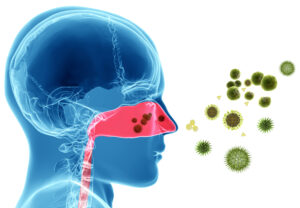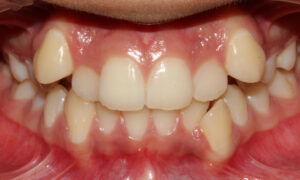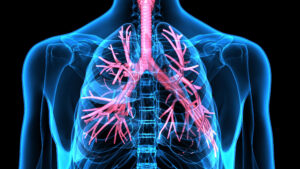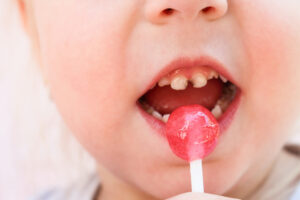New in Winter 2024
'Pure, White and Deadly'
An accredited continuing education course on the topic of sugar for dental and healthcare professionals is currently being developed and will be available in Winter 2024. Stay tuned for this.

Whilst in Nashville, Tim was interviewed for the podcast 'A Tale of Two Hygienists' on the topic of sugar. Here's a link to the: Podcast
Tim's published research from 2021 and 2022 can now be viewed here: Sugar Research , also a recently published article in the Journal of Dental Health which can be viewed here: UK: a nation addicted to sugar
If you wish to be kept updated or make contact for any reason, please drop an email to: [email protected]
Courses
If you are interested in any of the courses below, please drop Tim an email at [email protected] and you will be added to the list.
Courses are run when there are sufficient numbers of interested participants.


Breathing Physiology, Breathing Practical and Oral Myology
The cost of Parts 1 and 2 combined is £99 per participant and includes the 4-hour CPD certificate. To register a place or to be kept up-to-date please email [email protected]
Feedback received from course participants:
"It was really interesting learning a completely different topic. I loved your teaching style and being part of a small friendly group that allowed for everyone to contribute." Greta Compton
"The course has been very interesting and eye-opening, the content was really good" Magdelena Babral
"Excellent course, so much information. I have learned such a lot and will continue learning more." Jill Howell
"Tim presented the information very well, explaining thoroughly many aspects and always maintaining my interest and keeping all participants involved." Sandra Thompson
"Very relaxed learning environment with plenty of opportunities for interaction." Sally Simpson
"I loved how interactive the course is. I found it to be really helpful for my personal and professional life. I have already used the information to help my family and patients." Nina Farmer
"The course was delivered in a lovely relaxed manner with the most interesting content. The visuals used on the PowerPoint were great and I really liked the small group interaction between the participants." Jan Keys
Course details below:
PART 1 Breathing Physiology & Breathing Practical
Aim:
Learn how to maximise your breathing potential, understand the oral and systemic benefits of healthy breathing, and prevent COVID-19 infection through breathing effectively.
Outcomes:
- 1. Discuss the physiological differences between nasal breathing and mouth breathing.
- 2. List the signs and symptoms of mouth breathing.
- 3. Demonstrate healthy breathing.
- 4. Explain how healthy breathing can prevent a COVID-19 infection.
- 5. Explain the connection between mouth breathing and airway.
- 6. Explain a simple oral diagnostic test for mouth breathing.

Synopsis:
Very few people in the western world can put up their hands and say they breathe through their nose 24-hours per day.
- Do you snore?
- Do have asthma?
- Do you suffer from rhinitis?
- Do you suffer from daytime sleepiness?

If you answered yes to any of the above, then you are definitely a mouth breather. There are many other signs and symptoms and breathing pitfalls which I will cover during the presentation. In Part 1 my main aim is to ensure that you are breathing to your full potential to prevent COVID-19 infection.

During this global pandemic, the way that we breathe has now become a matter of life and death. I would wish for you all to be able to pass on this valuable information to your family, friends, and patients.
In addition to giving you all of the science, I will explain how you can create a baseline measurement of your breathing health and then explain how you can create your own bespoke breathing exercise plan to set you on your way to maximise your breathing potential.

I would like to keep the particpant numbers of these presentations low, to ensure everyone has the ability to be involved and ask questions.
Feedback from dental hygienists, dental therapists and dentists who have attended previous courses:
Course content was extremely interesting and thought provoking and the delivery by Tim was very engaging and easy to follow. Deborah Stratford
I liked the mix between the powerpoint and then engaging with us as a group and answering our questions throughout. Diane Rochford
It was a very interesting and thought provoking lecture I enjoyed the exercises. Nina Frate
Excellent informative lecture...like the fact that its informal and able to chat. Dr Barry Beilinsohn
To register a place, please email [email protected]
Places will be limited to small groups to enable personalised advice.
If you would like for your team or a personal group meeting this can also be organised. You will need a minimum of 10 people.
The cost of Parts 1 and 2 combined is £99 per participant and includes the 4-hour CPD certificate.
This course meets the requirements of GDC Outcomes A&C and is applicable to clinicians through Standard 1.4 of the Standards for the Dental Team. All courses are quality assured.
Part 2 Breathing Review and Introduction to Oral Myology
Aim:
To gain a greater understanding of the general health, oral health, and facial developmental benefits of nose versus mouth breathing in children and adults.

Outcomes:
- 1. Recognize oral and facial changes associated with mouth breathing.
- 2. Describe the link between mouth breathing, sleep disorders, and ADHD.
- 3. Make the connection between mouth breathing, sleep, and human growth hormone.
- 4. Explain the connection between jaw development and airway in children and adults.
- 5. Discuss the causes of mouth breathing.
- 6. Explain simple steps to ensure healthy facial and airway development.

Synopsis:
All healthy babies have the potential to become very healthy adults but somewhere along the way, people can switch from healthy to unhealthy breathing.
Healthcare practitioners rarely connect the dots between breathing and facial and airway development. You will learn how to connect those dots. Our jaw is 90% developed by the age of 12 so it is crucial to recognise any breathing-related disorders as early as possible.
In part 2 we will review the health of our breathing and then examine what may cause people to switch how they breathe and how this may affect facial and airway development. We will then discuss what signs and symptoms to look out for and then look at simple changes that can be made to convert people back to healthy breathing. 
We will also consider who and when to refer for 'specialist' referrals if that is required.
By the end of these two courses you will have knowledge that will benefit yourself, your families, friends, and patients.
Feedback from dental hygienists, dental therapists, and dentists who have attended previous courses:
"So informative and interesting." Zahra Shirvani
"The whole topic was extremely interesting & relevant to everyone." Lorraine Tomalin
"The presentation was wonderful." Dr Kam Sachdev
"The course was relevant on both a personal and a professional level. A rare find! I was gripped from start to finish and it was brilliantly delivered by Tim and the small group made for a really relaxed environment." Faye Donald
To register a place, please email [email protected]
Places will be limited to small groups to enable personalised advice.
If you would like for your team or a personal group meeting this can also be organised. You will need a minimum of 10 people.
The cost of Parts 1 & 2 combined is £99 per participant which includes the 4-Hour CPD Certificate. Dates below.
This course meets the requirements of GDC Outcomes A&C and is applicable to clinicians through Standard 1.4 of the Standards for the Dental Team. All courses are quality assured.
Live Audience 1 Hour to 1 Day
Breathe Better to Live Better
Aim:
To gain a greater understanding of the general health and oral health benefits of nose versus mouth breathing in children and adults.
Objectives:
- 1. Understand physiological differences between nasal breathing and mouth breathing.
- 2. List the signs and symptoms of mouth breathing.
- 3. Recognize oral and facial changes associated with mouth breathing.
- 4. Describe the link between mouth breathing and ADHD.
- 5. Make the connection between mouth breathing, sleep, and human growth hormone.
- 6. Understand the connection between mouth breathing and airway.

Synopsis:
Humans are designed to be nose breathers, but somewhere along the way, nose breathing can change to mouth breathing and reduced oxygen absorption. Adequate oxygen levels lead to regenerative sleep and the release of human growth hormone. Mouth breathing leads to lower oxygen absorption levels, poor sleep, and misdiagnosis of children with attention deficit hyperactivity disorder (ADHD). Normal nasal breathing involves the tongue being up, teeth apart, and lips together. In children, the tongue up during rest and swallowing provides the necessary stimulus for adequate palatal development. The tongue position associated with mouth breathing leads to compromised jaw development and a restricted airway. Mouth breathing is a predictor of sleep apnea, long face syndrome, and other developmental and sleep-related problems.

Optional Inclusions:
Practical Buteyko Breathing Exercises
Simple Myonfunctional Therapy Exercises
This programme can be adapted from 1 hour to a day depending on the audience and requirements. This course relates to my book co-written with Trisha O'Hehir and available here: LipZip
Sponsors & Friends:
To register your interest, please email [email protected]
This course meets the requirements of GDC Outcomes A&C and is applicable to clinicians through Standard 1.4 of the Standards for the Dental Team. All courses are quality assured.
Live Audience 1 to 2 Hours
"Pure, white and deadly"
Aim:
To gain a greater understanding of the different sugar groups & their microbiological effects in biofilm, inflammation and on oral & systemic health.
Objectives:
- Discuss the differences between the various sugar groups.
- Discuss the microbiological effects of the various sugar groups in biofilm and the inflammatory process
- Discuss the oral & systemic effects of the various sugar groups.
- Understand which, when & how to recommend the appropriate sugar ployol to their patients.
- Understand how sugar ployols can be used to prevent and treat disease.

Synopsis:
The power of the sugar industry is not to be taken lightly. Every year global sugar consumption increases more than the population and every year more and more people become unhealthier and many die as a result. Approximately 85% of the products sold in a supermarket contain sugar and the majority of people in the Western World are now addicted to this white powder.

In this presentation I will tell the story of how this all started and how we got to this point in time. I will unravel the complexities of the different sugar groups and additionally I will explain how some sugars can be used to make us healthier and finally go on to disuss how to positively help change the behaviour of our friends, families and patients.
Sponsors and Friends:
To register your interest, please email [email protected]
This course meets the requirements of GDC Outcomes A&C and is applicable to clinicians through Standard 1.4 of the Standards for the Dental Team. All courses are quality assured.